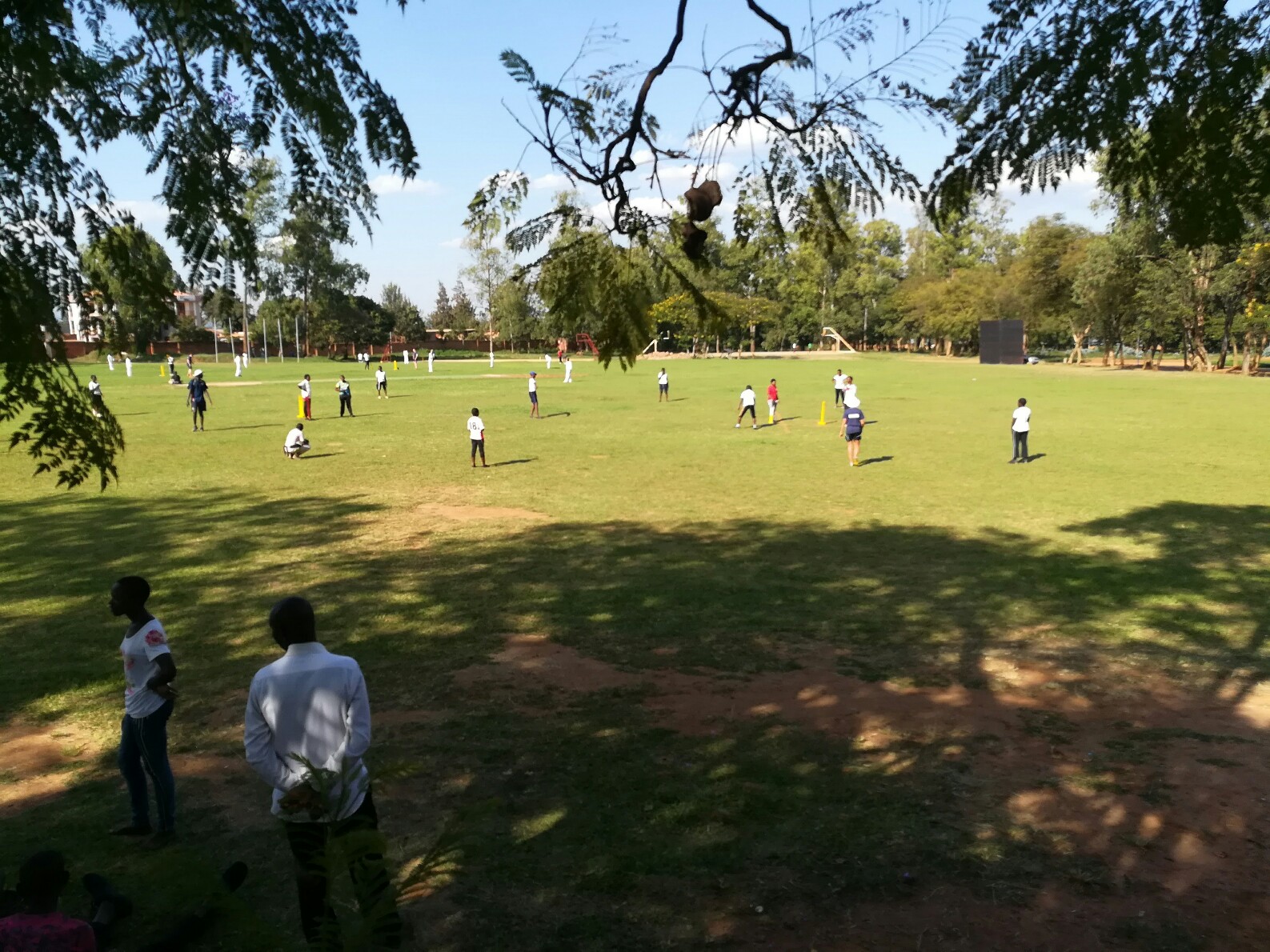Day 2 started out relaxed with a few hours in the nearby pool before on to the hard work. We helped out with the schools cricket festival which involved three local schools; IPRC, Ndera and Kicukiro who each entered both a boys and girls team. We all took on a different role in the tournament with some of the group umpiring and some taking on the mighty task of scoring with the help of the children.
The display of cricket was amazing by all teams, however the level of competition between the boys and girls was very different. In the girls’ game, after the second over the wicket keeper stepped in to show the oppositions batter how to stand correctly, whereas the boys match was a whole new level of competitiveness and they demonstrated some interesting celebration moves!
Mollie and Becky thought they could have a dance off with the school children however they were massively out of their depth when they realised how good the girls were. It was safe the say our CWB team didn’t win the dance off.

Lots of the children were interested in our lives and told us about their aspirations, one bright girl told us she wanted to try to get out of Rwanda so that she could study to become a pilot or a doctor. Another girl totally impressed us when she told us she could speak Swahili along with Rwandan and English, she defiantly showed our volunteers up as we could only speak English to them!
Lee also had a moment to remember when a young man approached us in the clubhouse afterwards to speak to him, and thank him for introducing him to cricket when he was young. Lee was delighted to find out that he was still playing and had just been training with his club.
[youtube_sc url=”https://youtu.be/rWM7XaNBHNc”]
Throughout the tournament we wanted to find out more about what the children know about HIV. One of the ways we evaluate the effectiveness of the CWB project is to hold small focused discussions with groups of girls and boys, usually separately, to explore their understanding of truths, myths and preventative knowledge around HIV, and also to explore their sources of information about HIV.
Today we chatted with a group of 14 years olds from Kicukiro School, and they explained that they learn about HIV in biology at school and they have plenty of opportunities to discuss it as part of their teaching. When we were talking about CWB and the use of cricket to promote health messages, one of the girls, Deborah, explained that her way of understanding it was to see HIV as the cricket ball, the bat as a condom and the stumps as her healthy life. She said that the bat (condom) was protecting her healthy life (stumps) from the ball (HIV). We thought this was a great demonstration of the CWB messages that really showed that as the children get older, the sport and CWB messages integrate really positively with health education messages in school.

Another brilliant example was when we were chatting with a group of younger children from Ndera School. The girls’ understanding of English was less developed than the older girls, but the great thing was that some of the older boys stepped in to help translate and also to guide the girls in thinking about the questions we were exploring. We weren’t sure if having the boys involved in the discussion would inhibit the girls, but absolutely the opposite was true, and the boys were encouraging and supporting the girls to express their knowledge and thoughts. This really embodied one of the final suggestions that the girls came up with to help prevent HIV, which was to talk about it, and to give advice to others and each other.

For us, this was a real demonstration of how the HIV messages are being embedded in a sustainable way into the fabric of the young people’s lives, through their taught curriculum, through the ongoing work by CWB champions like tall Eric and Lee, and through the additional opportunities that are created by our student visits.
Be First to Comment